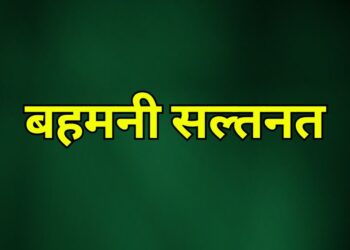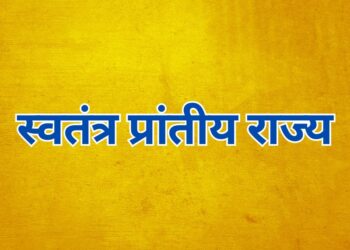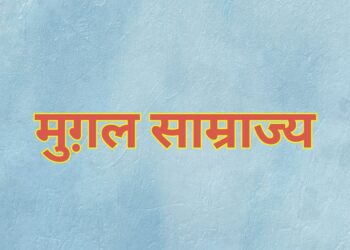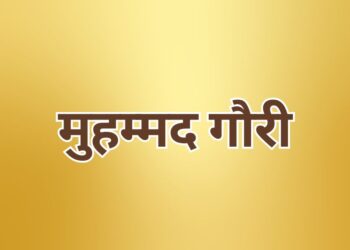भारत में सरकारी बीमा कंपनियों का एक व्यापक अवलोकन प्रदान है , जिसमें उनके इतिहास, प्रकार, उत्पाद, नियामक ढांचे और बीमा क्षेत्र पर प्रभाव को शामिल किया गया है। स्थान की सीमाओं के कारण, यह प्रतिक्रिया एक संक्षिप्त संस्करण होगी।
-
भारत में सरकारी बीमा कंपनियों का परिचय:
– उत्पत्ति: भारत में बीमा क्षेत्र में प्रमुख खिलाड़ियों के रूप में सरकारी स्वामित्व वाली बीमा कंपनियों की स्थापना के साथ महत्वपूर्ण विकास देखा गया है।
– उद्देश्य: इन कंपनियों का प्राथमिक उद्देश्य व्यक्तियों, व्यवसायों और देश के विकास के लिए महत्वपूर्ण क्षेत्रों को बीमा कवरेज प्रदान करना है।
-
ऐतिहासिक पृष्ठभूमि:
– भारतीय जीवन बीमा निगम (LIC):
– स्थापना: 1956 में 200 से अधिक बीमा कंपनियों और प्रोविडेंट सोसाइटियों का विलय करके स्थापित किया गया।
– एकाधिकार अवधि: 2000 में बीमा उद्योग के उदारीकरण तक एलआईसी को जीवन बीमा क्षेत्र में एकाधिकार प्राप्त था।
– भारतीय सामान्य बीमा निगम (जीआईसी):
– गठन: 1972 में एक सरकारी स्वामित्व वाली पुनर्बीमाकर्ता के रूप में स्थापित।
– परिवर्तन: जीआईसी का बाद में पुनर्गठन हुआ, जिससे 2000 में चार स्वतंत्र सहायक कंपनियों का गठन हुआ।
-
सरकारी बीमा कंपनियों के प्रकार:
– जीवन बीमा कंपनियाँ:
– एलआईसी (भारतीय जीवन बीमा निगम):
– अवलोकन: भारत में सबसे बड़ी जीवन बीमा कंपनी, जीवन बीमा उत्पादों की एक श्रृंखला पेश करती है।
– उत्पाद: एंडोमेंट प्लान, टर्म इंश्योरेंस, यूलिप और पेंशन प्लान।
– बाज़ार में उपस्थिति: एजेंटों, शाखाओं और ऑनलाइन प्लेटफ़ॉर्म के विशाल नेटवर्क के माध्यम से संचालित होता है।
– सामान्य बीमा कंपनियाँ:
– नेशनल इंश्योरेंस कंपनी लिमिटेड (एनआईसीएल):
– अवलोकन: भारत की सबसे पुरानी सामान्य बीमा कंपनियों में से एक।
– उत्पाद: मोटर, स्वास्थ्य, संपत्ति और यात्रा बीमा सहित विभिन्न गैर-जीवन बीमा उत्पाद पेश करता है।
– न्यू इंडिया एश्योरेंस कंपनी लिमिटेड (NIACL):
– अवलोकन: 1919 में स्थापित, एनआईएसीएल सामान्य बीमा क्षेत्र में एक प्रमुख खिलाड़ी है।
– वैश्विक उपस्थिति: कई देशों में संचालित होता है, जो इसके वैश्विक कद में योगदान देता है।
– ओरिएंटल इंश्योरेंस कंपनी लिमिटेड (OICL):
– अवलोकन: 1947 में स्थापित, OICL एक सार्वजनिक क्षेत्र की सामान्य बीमा कंपनी है।
– उत्पाद रेंज: समुद्री, ग्रामीण और औद्योगिक बीमा सहित विविध बीमा समाधान प्रदान करता है।
– यूनाइटेड इंडिया इंश्योरेंस कंपनी लिमिटेड (यूआईआईसी):
– अवलोकन: व्यापक ग्राहक आधार वाली अग्रणी सामान्य बीमा कंपनियों में से एक।
– उत्पाद स्पेक्ट्रम: स्वास्थ्य, मोटर, यात्रा और बहुत कुछ को कवर करते हुए विभिन्न बीमा उत्पाद पेश करता है।
-
उत्पाद और सेवाएं:
– भारतीय जीवन बीमा निगम (LIC):
– व्यक्तिगत योजनाएँ: बंदोबस्ती योजनाएँ, सावधि बीमा, मनी-बैक योजनाएँ और संपूर्ण जीवन बीमा।
– पेंशन और वार्षिकी योजनाएं: सेवानिवृत्ति के बाद नियमित आय प्रदान करना।
– सामान्य बीमा कंपनियाँ:
– मोटर बीमा: वाहनों के लिए व्यापक और तृतीय-पक्ष बीमा।
– स्वास्थ्य बीमा: चिकित्सा व्यय और अस्पताल में भर्ती के लिए कवरेज।
– संपत्ति बीमा: घरों, व्यवसायों और अन्य संपत्तियों के लिए सुरक्षा।
– यात्रा बीमा: यात्रा संबंधी जोखिमों और आपात स्थितियों के लिए कवरेज।
– फसल बीमा: किसानों को फसल नुकसान के खिलाफ वित्तीय सहायता प्रदान करना।
-
नियामक ढांचा:
– भारतीय बीमा विनियामक और विकास प्राधिकरण (आईआरडीएआई):
– स्थापना: बीमा उद्योग को विनियमित और विकसित करने के लिए एक स्वायत्त निकाय के रूप में 1999 में गठित।
– भूमिका: आईआरडीएआई बीमा कंपनियों के कामकाज की देखरेख करता है, पॉलिसीधारक के हितों को सुनिश्चित करता है और उद्योग के विकास को बढ़ावा देता है।
– सरकारी नियंत्रण एवं निरीक्षण:
– स्वामित्व: सरकार के पास एलआईसी, एनआईएसीएल, एनआईसीएल, ओआईसीएल और यूआईआईसी में महत्वपूर्ण हिस्सेदारी है।
– नीति दिशानिर्देश: सरकारी नीतियां और दिशानिर्देश इन कंपनियों के कामकाज और रणनीतिक निर्णयों को प्रभावित करते हैं।
-
बाजार हिस्सेदारी और प्रतिस्पर्धा:
– जीवन बीमा क्षेत्र:
– एलआईसी का प्रभुत्व: एलआईसी ऐतिहासिक रूप से अपनी एकाधिकार स्थिति के कारण जीवन बीमा बाजार पर हावी रही।
– निजी खिलाड़ी: उदारीकरण के बाद, निजी जीवन बीमा कंपनियों ने बाजार हिस्सेदारी हासिल की है।
– सामान्य बीमा क्षेत्र:
– प्रतिस्पर्धा: सामान्य बीमा क्षेत्र की विशेषता सार्वजनिक और निजी खिलाड़ियों के बीच तीव्र प्रतिस्पर्धा है।
– बाज़ार की गतिशीलता: निजी बीमाकर्ताओं ने सरकारी स्वामित्व वाली कंपनियों के पारंपरिक प्रभुत्व को चुनौती देते हुए महत्वपूर्ण प्रगति की है।
-
वित्तीय प्रदर्शन:
– एलआईसी:
– प्रबंधन के तहत संपत्ति (एयूएम): एलआईसी के पास पर्याप्त एयूएम है, जो इसे भारत में सबसे बड़े संस्थागत निवेशकों में से एक बनाता है।
– लाभप्रदता: एलआईसी का वित्तीय प्रदर्शन जीवन बीमा क्षेत्र में इसकी मजबूत स्थिति को दर्शाता है।
– सामान्य बीमा कंपनियाँ:
– संयुक्त अनुपात: संतुलित हामीदारी और दावा अनुपात बनाए रखने के प्रयासों के साथ, सामान्य बीमा कंपनियों की लाभप्रदता को दर्शाता है।
– प्रीमियम आय: कंपनियों की बाजार में उपस्थिति और वृद्धि का एक प्रमुख संकेतक।
-
सामाजिक प्रभाव और पहुंच:
– समावेशी बीमा: सरकारी बीमा कंपनियों का लक्ष्य ग्रामीण और आर्थिक रूप से कमजोर वर्गों सहित समाज के विभिन्न वर्गों तक कवरेज का विस्तार करना है।
– सार्वजनिक जागरूकता कार्यक्रम: वित्तीय समावेशन में योगदान करते हुए बीमा और इसके लाभों के बारे में जागरूकता बढ़ाने की पहल।
-
सरकारी पहल और सुधार:
– वित्तीय समावेशन कार्यक्रम: वंचित समुदायों के बीच बीमा कवरेज को बढ़ावा देने वाली सरकार समर्थित योजनाएं।
– डिजिटलीकरण: परिचालन दक्षता, ग्राहक सेवा और आउटरीच में सुधार के लिए डिजिटल प्रौद्योगिकियों को अपनाना।
-
चुनौतियाँ और अनुकूलन:
– तकनीकी परिवर्तन: बेहतर ग्राहक सेवा और परिचालन दक्षता के लिए तकनीकी प्रगति को अपनाना।
– निजी कंपनियों से प्रतिस्पर्धा: निजी बीमाकर्ताओं की बढ़ती उपस्थिति से उत्पन्न चुनौतियों का समाधान।
11. वैश्वीकरण और अंतर्राष्ट्रीय सहयोग:
– विदेशी उपस्थिति: कुछ सरकारी बीमा कंपनियों ने अंतरराष्ट्रीय स्तर पर अपने परिचालन का विस्तार किया है।
– पुनर्बीमा: जोखिमों के प्रबंधन के लिए वैश्विक पुनर्बीमा बाजारों में भागीदारी।
-
संकट प्रतिक्रिया:
– महामारी प्रतिक्रिया: सरकारी बीमा कंपनियों ने COVID-19 महामारी जैसे स्वास्थ्य संकट के दौरान कवरेज और सहायता प्रदान करने में भूमिका निभाई है।
– प्राकृतिक आपदाएँ: त्वरित दावों के निपटान और वसूली की सुविधा प्रदान करके प्राकृतिक आपदाओं का जवाब देना।
-
भविष्य के दृष्टिकोण और नवाचार:
– डिजिटल बीमा प्लेटफ़ॉर्म: ऑनलाइन बिक्री, दावा प्रसंस्करण और ग्राहक जुड़ाव के लिए प्रौद्योगिकी को अपनाना।
– अनुकूलित उत्पाद: ग्राहकों की बढ़ती जरूरतों के अनुरूप नवीन बीमा उत्पाद डिजाइन करना।
– डेटा एनालिटिक्स: जोखिम मूल्यांकन, धोखाधड़ी का पता लगाने और अंडरराइटिंग प्रक्रियाओं में सुधार के लिए डेटा एनालिटिक्स का उपयोग करना।
निष्कर्ष:
– भारत में सरकारी बीमा कंपनियाँ, जीवन और सामान्य बीमा दोनों में, बीमा परिदृश्य को आकार देने और व्यक्तियों और राष्ट्र की वित्तीय भलाई में योगदान देने में सहायक रही हैं।
– बदलती गतिशीलता को अपनाना, प्रौद्योगिकी को अपनाना और समावेशी विकास पर ध्यान केंद्रित करना इन संस्थाओं के लिए अपनी प्रासंगिकता बनाए रखने और भारतीय आबादी की विविध आवश्यकताओं को प्रभावी ढंग से पूरा करने के लिए महत्वपूर्ण होगा।














